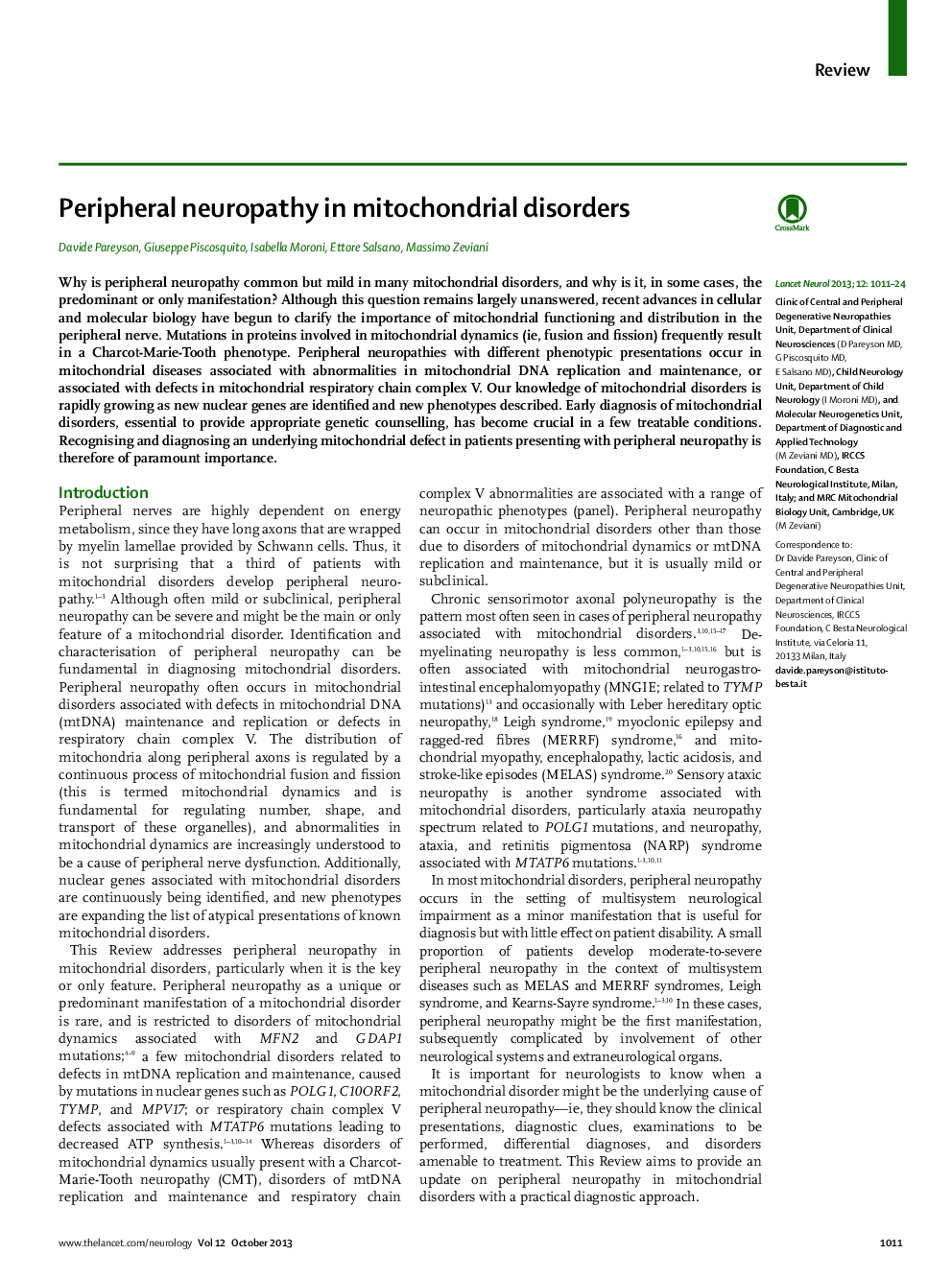| Article ID | Journal | Published Year | Pages | File Type |
|---|---|---|---|---|
| 3066746 | The Lancet Neurology | 2013 | 14 Pages |
SummaryWhy is peripheral neuropathy common but mild in many mitochondrial disorders, and why is it, in some cases, the predominant or only manifestation? Although this question remains largely unanswered, recent advances in cellular and molecular biology have begun to clarify the importance of mitochondrial functioning and distribution in the peripheral nerve. Mutations in proteins involved in mitochondrial dynamics (ie, fusion and fission) frequently result in a Charcot-Marie-Tooth phenotype. Peripheral neuropathies with different phenotypic presentations occur in mitochondrial diseases associated with abnormalities in mitochondrial DNA replication and maintenance, or associated with defects in mitochondrial respiratory chain complex V. Our knowledge of mitochondrial disorders is rapidly growing as new nuclear genes are identified and new phenotypes described. Early diagnosis of mitochondrial disorders, essential to provide appropriate genetic counselling, has become crucial in a few treatable conditions. Recognising and diagnosing an underlying mitochondrial defect in patients presenting with peripheral neuropathy is therefore of paramount importance.
